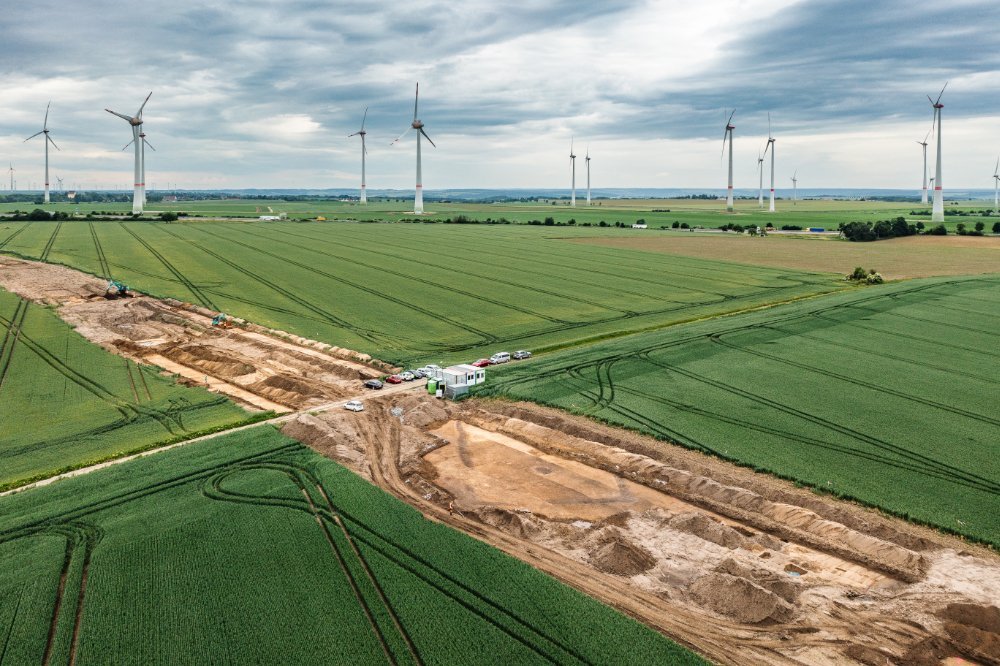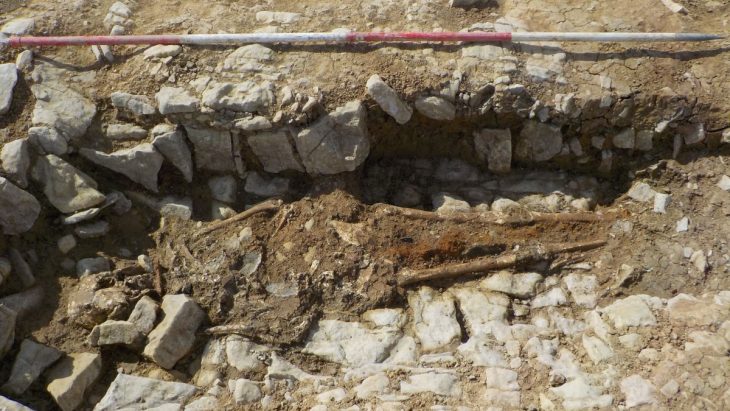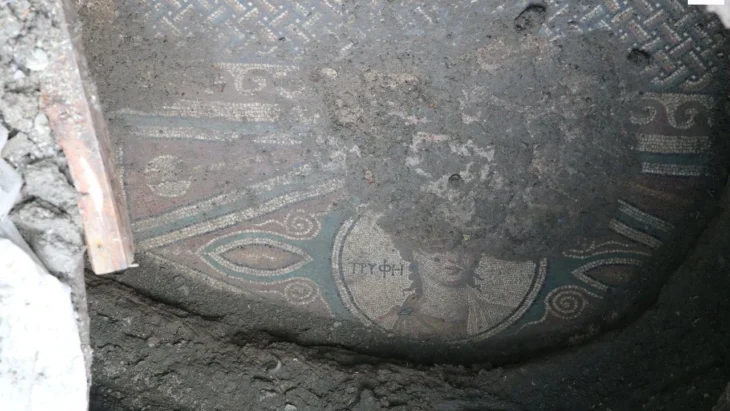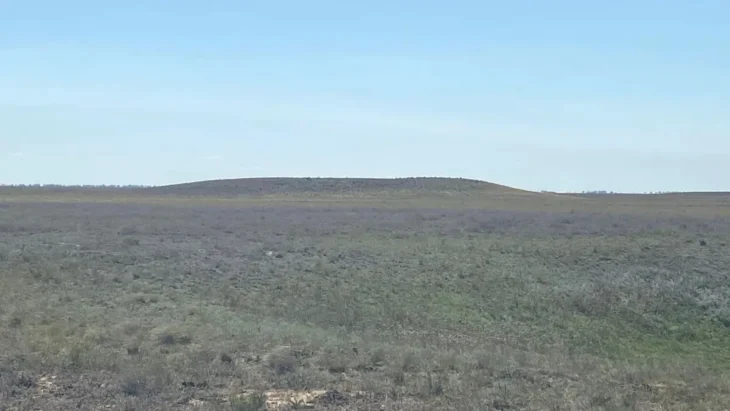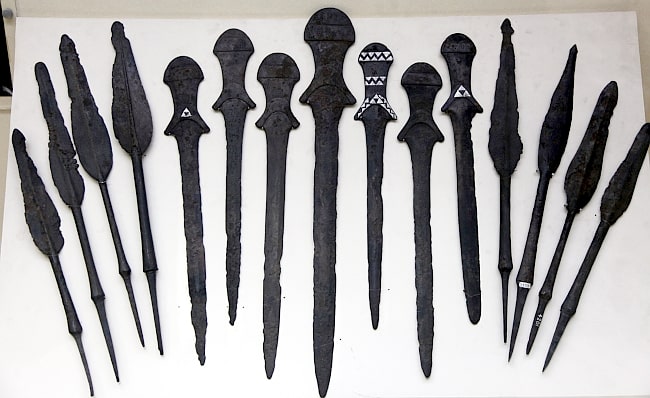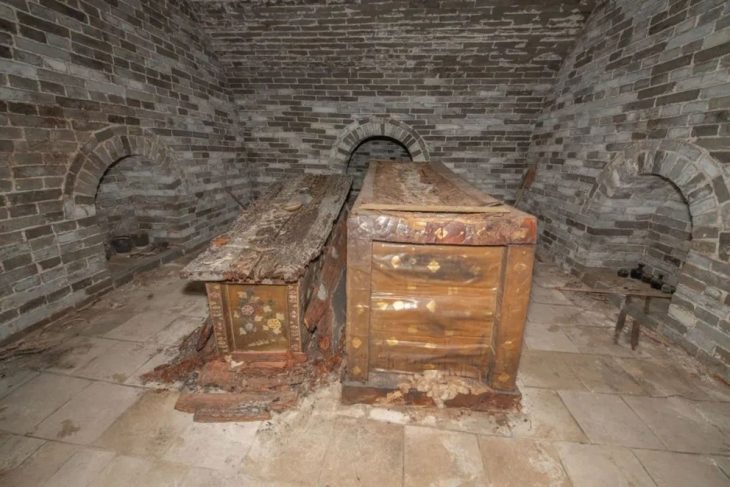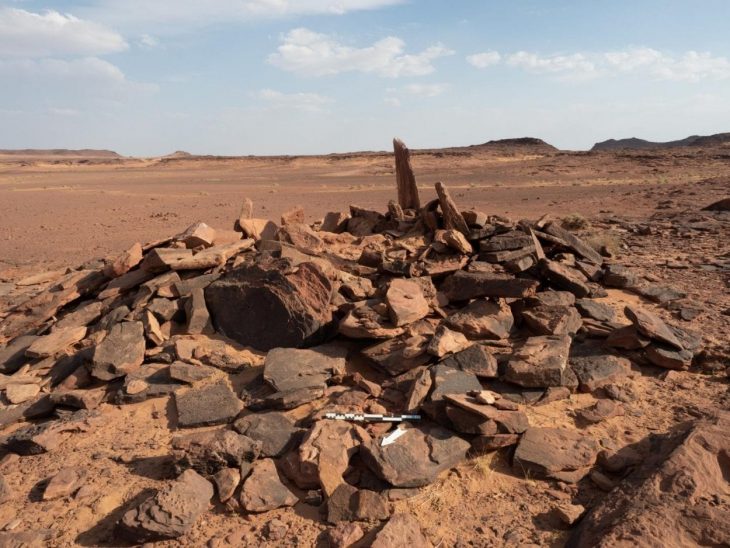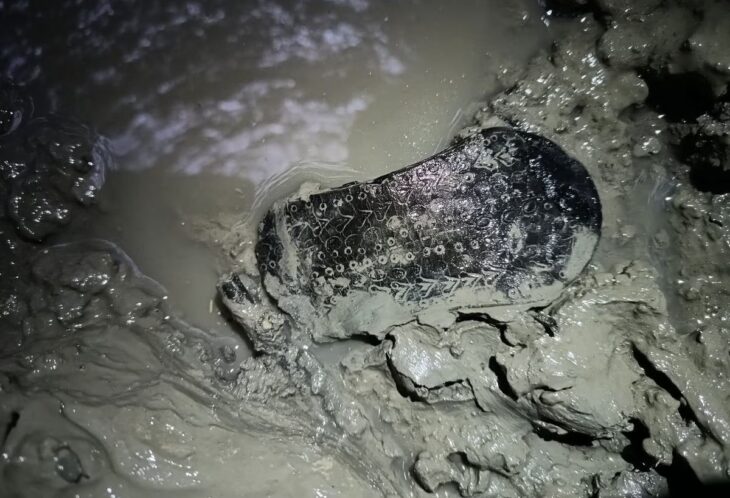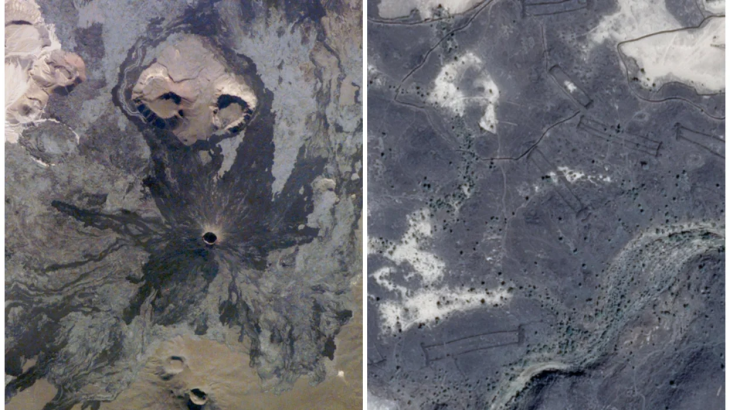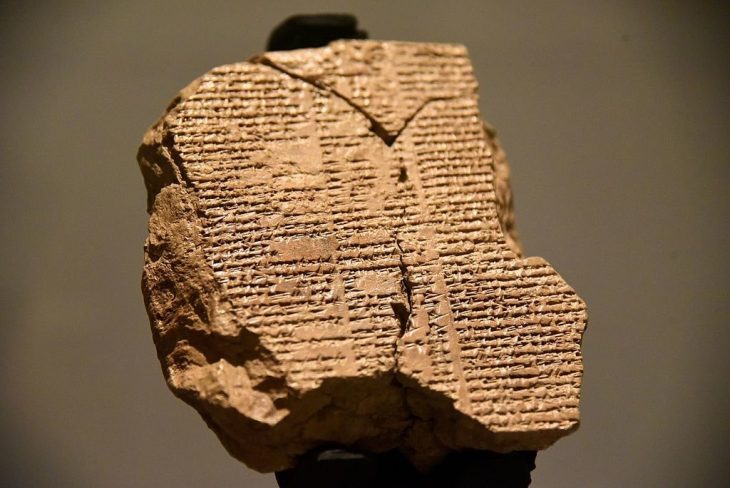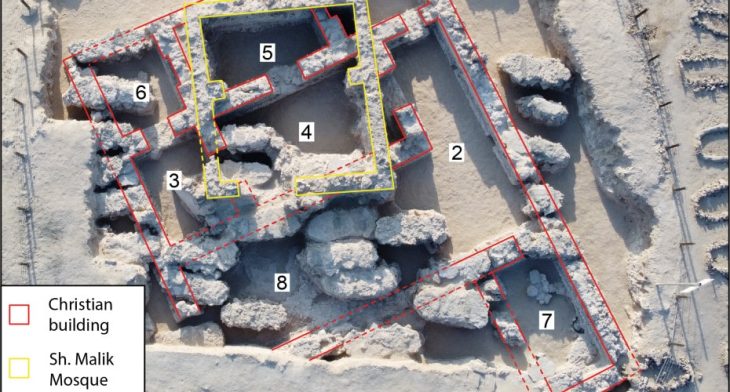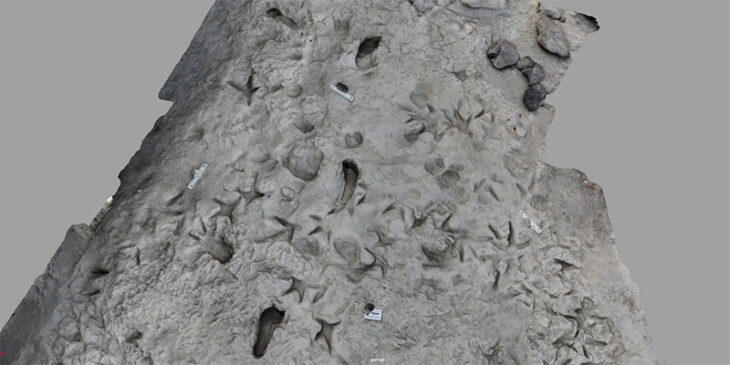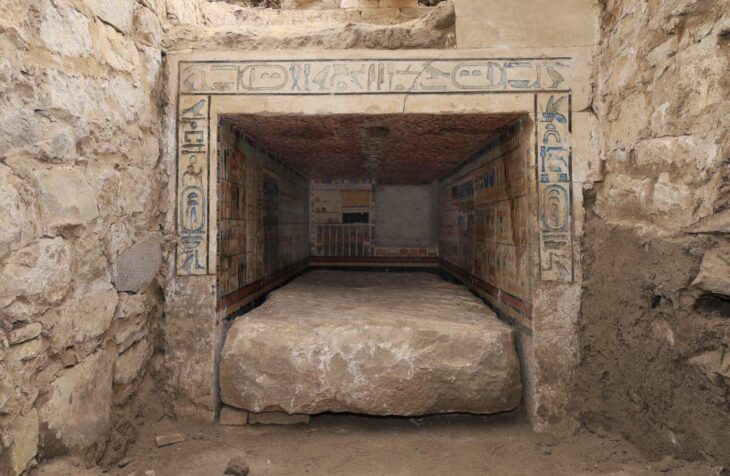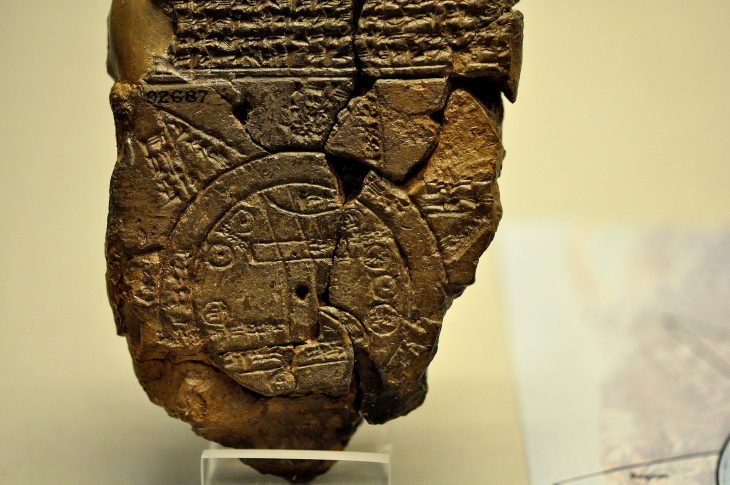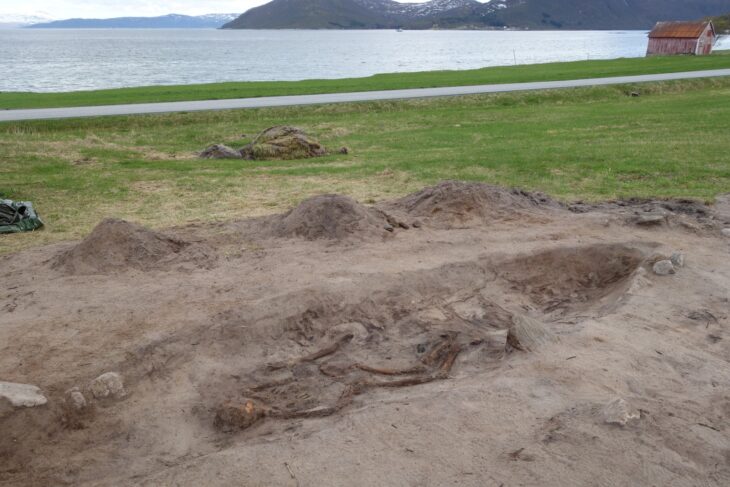Archaeological excavations near Krauschwitz reveal rare decorated leather bags buried with women and infants—shining new light on Neolithic burial customs along the SuedOstLink route.
A groundbreaking archaeological discovery near the village of Krauschwitz in Saxony-Anhalt, Germany, has revealed elaborately decorated prehistoric bags adorned with dog teeth, believed to have been used by elite women—possibly even as baby carriers.
The findings, uncovered during preparatory excavations for the SuedOstLink high-voltage powerline project, offer unprecedented insight into the funerary practices and social hierarchy of the Corded Ware Culture (ca. 2800–2200 BCE).
Led by the State Office for Heritage Management and Archaeology of Saxony-Anhalt, and coordinated with grid operator 50Hertz, the ongoing archaeological survey along the 170-kilometer SuedOstLink route has brought to light numerous burial sites. But none are as compelling as the richly ornamented bags found in several graves of young women.
Decorated Bags Made from Leather or Textile and Adorned with Dog Teeth
The bags—whose organic material has long since decomposed—are evidenced by the hundreds of carefully drilled dog teeth that once adorned them. Arranged in overlapping rows like roof shingles, the teeth were likely sewn onto the bag’s front surface. Each bag, approximately 30 centimeters wide and 20 centimeters tall, may have required up to 350 teeth, predominantly from a medium-sized dog breed resembling today’s Small Münsterländer.
📣 Our WhatsApp channel is now LIVE! Stay up-to-date with the latest news and updates, just click here to follow us on WhatsApp and never miss a thing!!
These accessories weren’t mere decoration. Researchers believe they symbolized both status and identity within the Corded Ware society. The extraordinary craftsmanship and rarity suggest the bags were highly personal and non-inheritable items reserved for women of elite social standing. Indeed, similar finds were present in about 20% of female burials at Krauschwitz and the nearby site of Nessa.
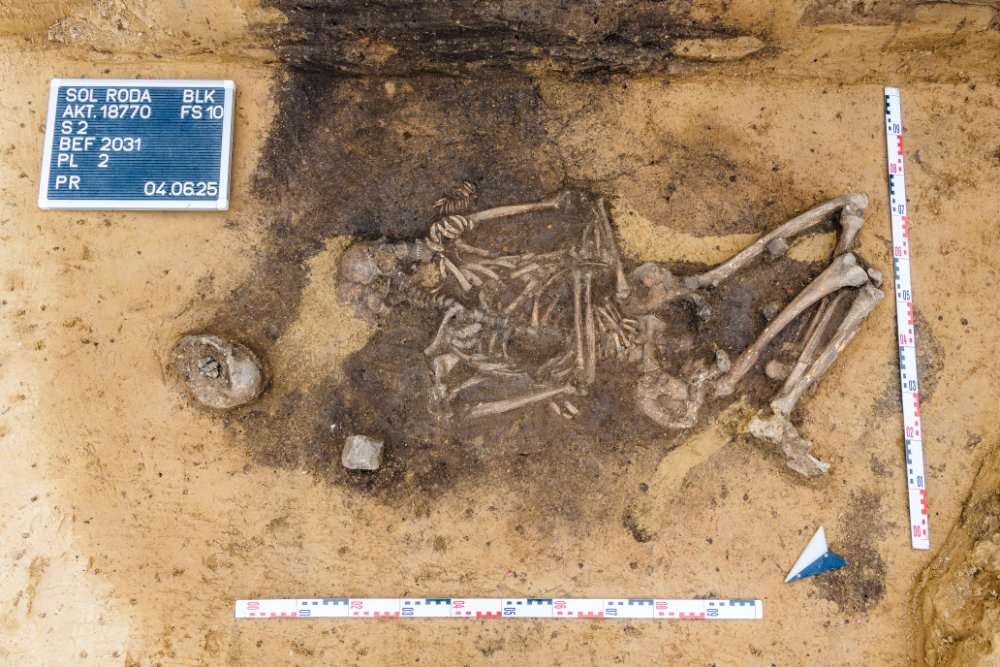
Possible Use as Baby Carriers
What truly sets these finds apart, however, is their association with infant remains. In several cases, tiny bones—presumably of newborns or fetuses—were found inside or near the bags. This discovery has led archaeologists to hypothesize that the tooth-adorned bags may have functioned as a form of baby carrier or cradle bag.
The position of the bags in the grave, typically in front of the body, supports the theory that they were worn on the front torso during life. Accompanying textiles, including a sash or scarf embroidered with additional teeth—particularly molars—may have served to shield the infant’s limbs and head. These thoughtful details suggest that the bags were not only ceremonial but also functional, blending maternal care with social symbolism.
In one particularly poignant case, a pregnant woman buried with such a bag may have died during childbirth, with the bag holding the remains of her unborn child. This connection reinforces the idea that these were not generic grave goods but intimate personal items tied to motherhood and identity.
Wider Context: A Sacred Landscape Rich in History
The finds are part of a broader archaeological investigation into the Neolithic and Early Bronze Age history of the area. Alongside the Corded Ware graves, researchers have also uncovered older burial mounds from the Baalberg Culture (ca. 4000 BCE), including trapezoidal wooden structures once covered with loess to form prominent mounds.
This site, located along a ridge north of modern-day Krauschwitz, served as a sacred and strategic location for thousands of years. The reuse of burial grounds by later cultures illustrates a powerful continuity of spiritual significance attached to the land.
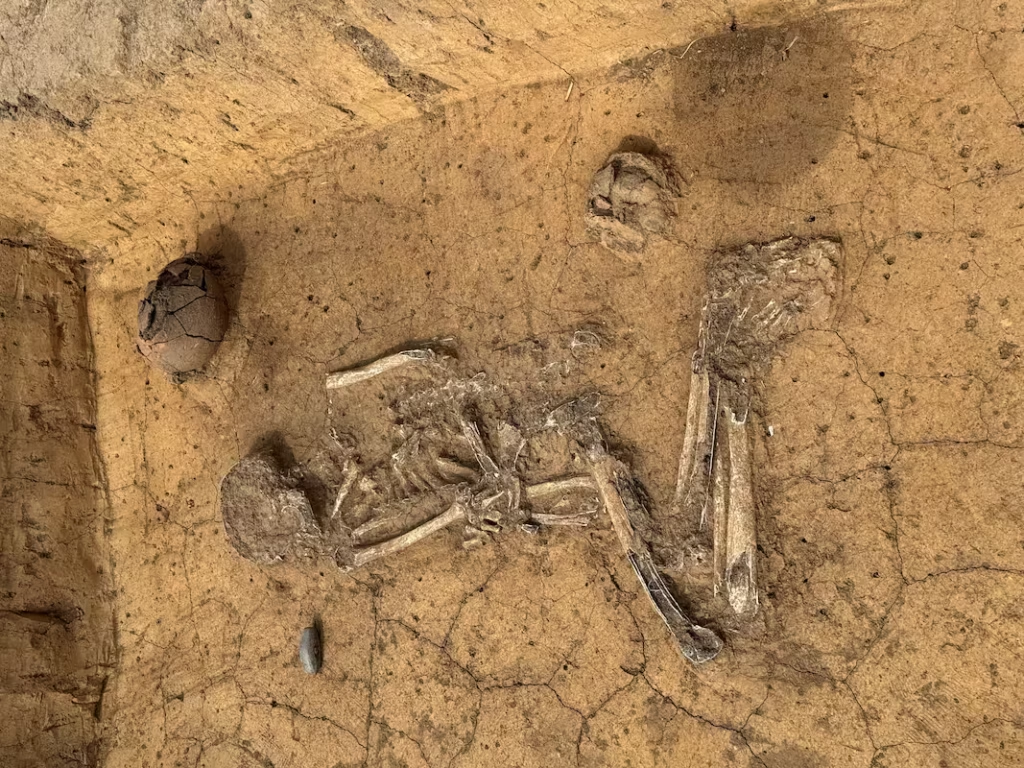
Preservation and Next Steps
The decorated bags and associated graves are being carefully removed in blocks and transported to conservation labs for detailed analysis. A team of 20 archaeologists is currently working on-site, aiming to complete this phase of the excavation by the end of July. The findings will be thoroughly studied and likely exhibited in future museum displays.
Despite the complexity of the work, coordination between archaeologists and 50Hertz has ensured that both cultural heritage and infrastructure progress go hand in hand. As the SuedOstLink moves toward construction, these discoveries stand as a testament to the deep human history buried beneath modern development.
State Office for Heritage Management and Archaeology of Saxony-Anhalt / State Museum of Prehistory

